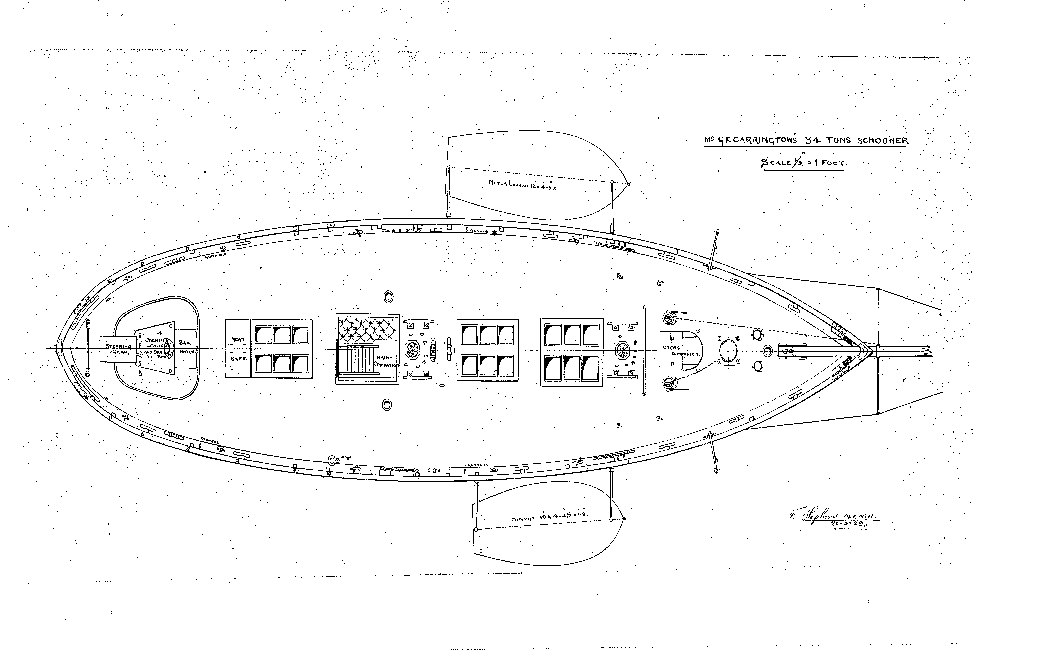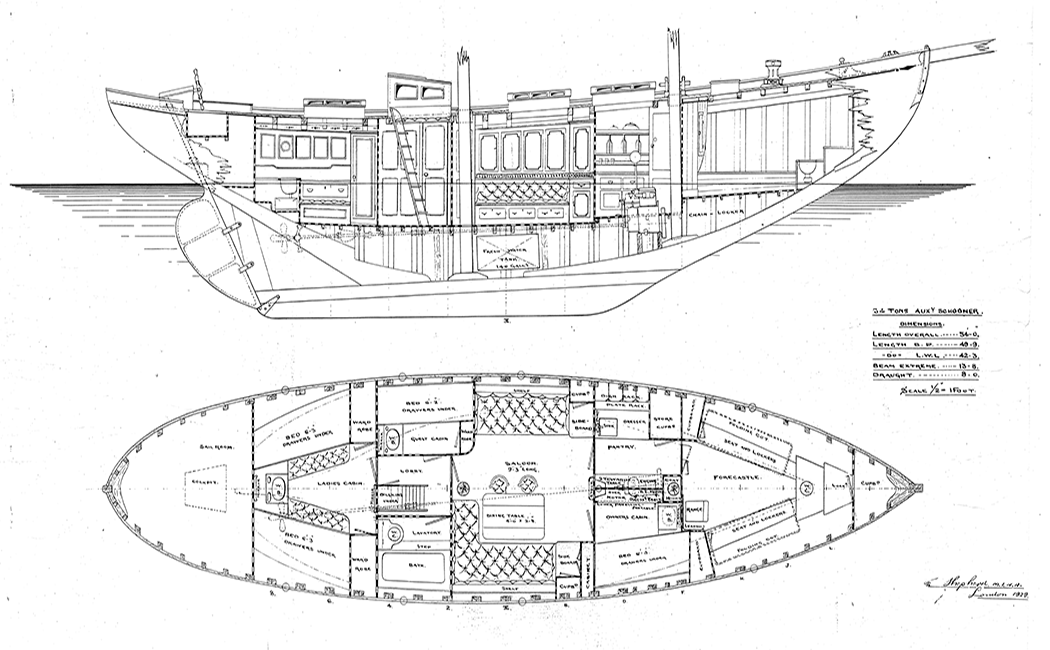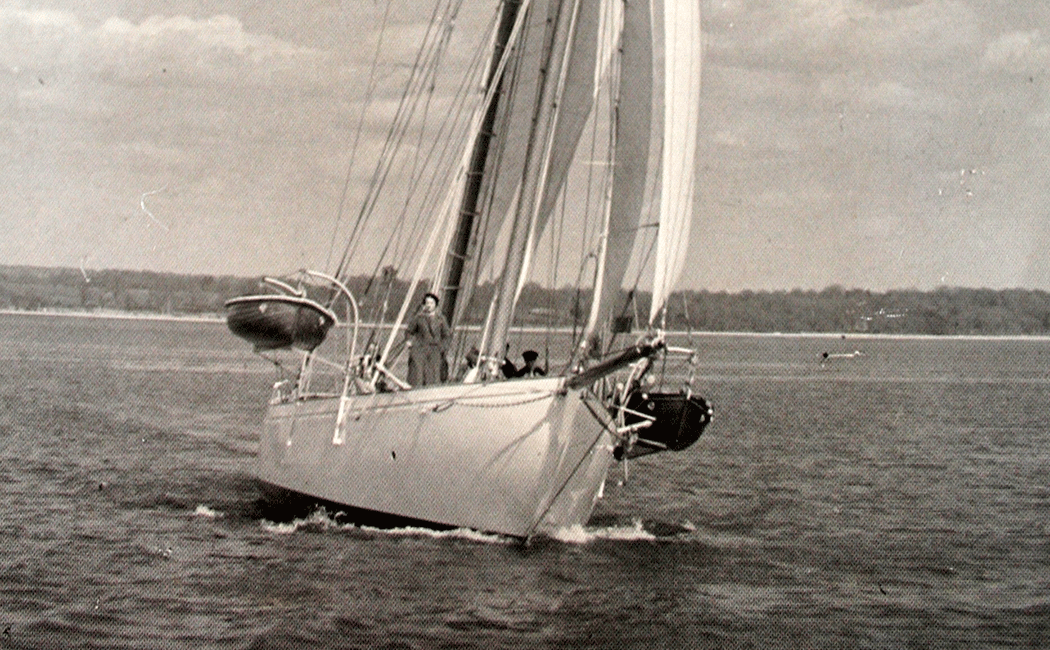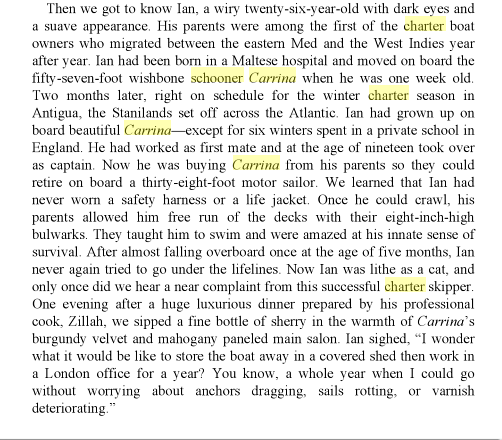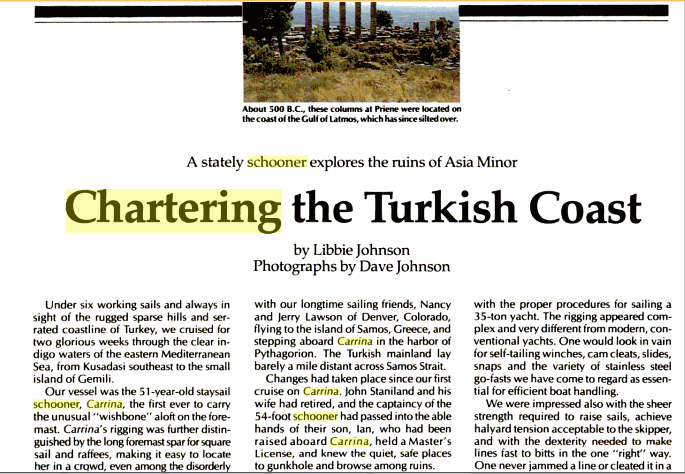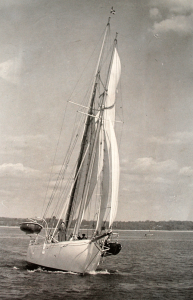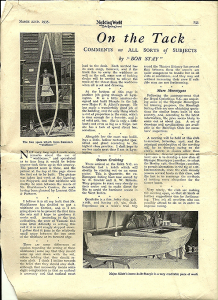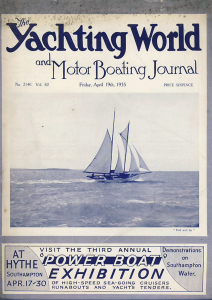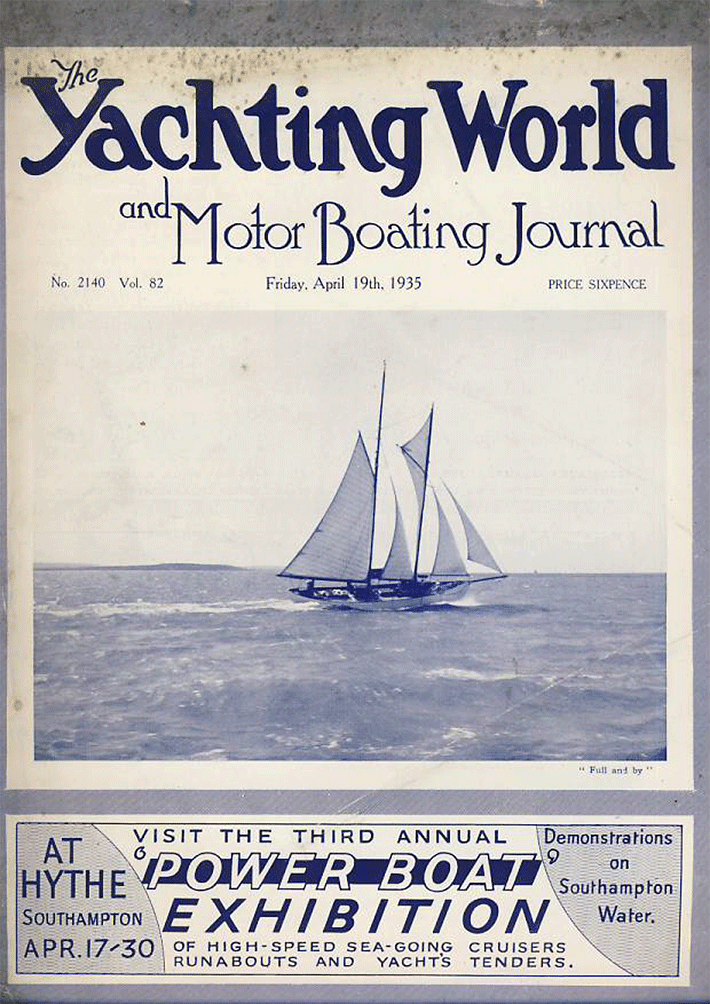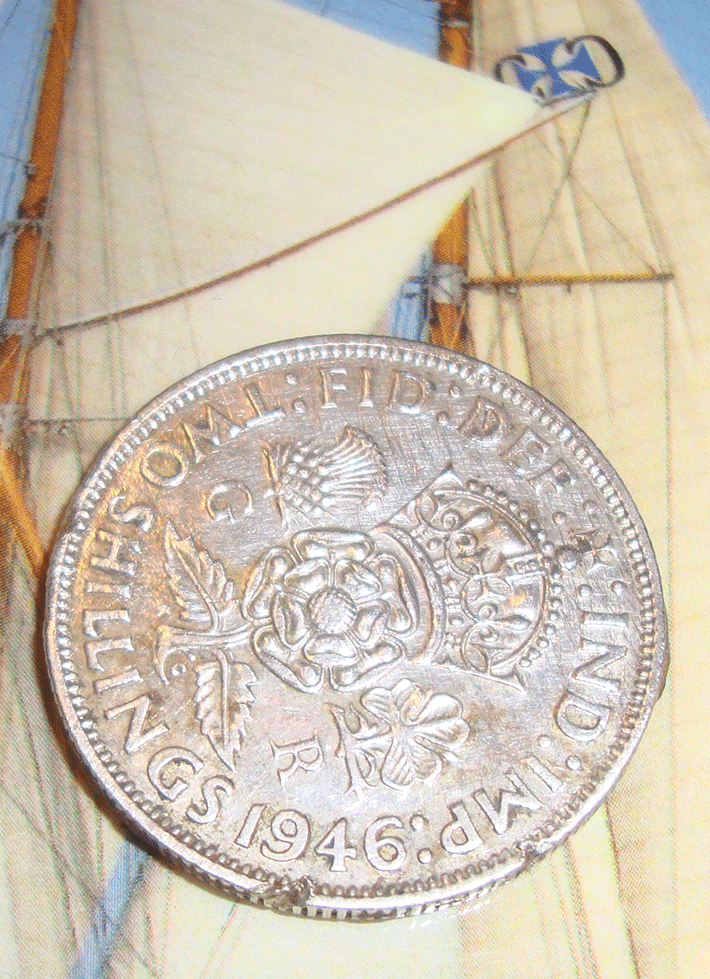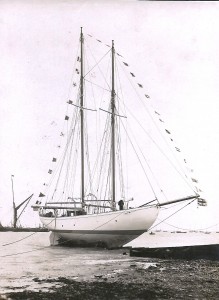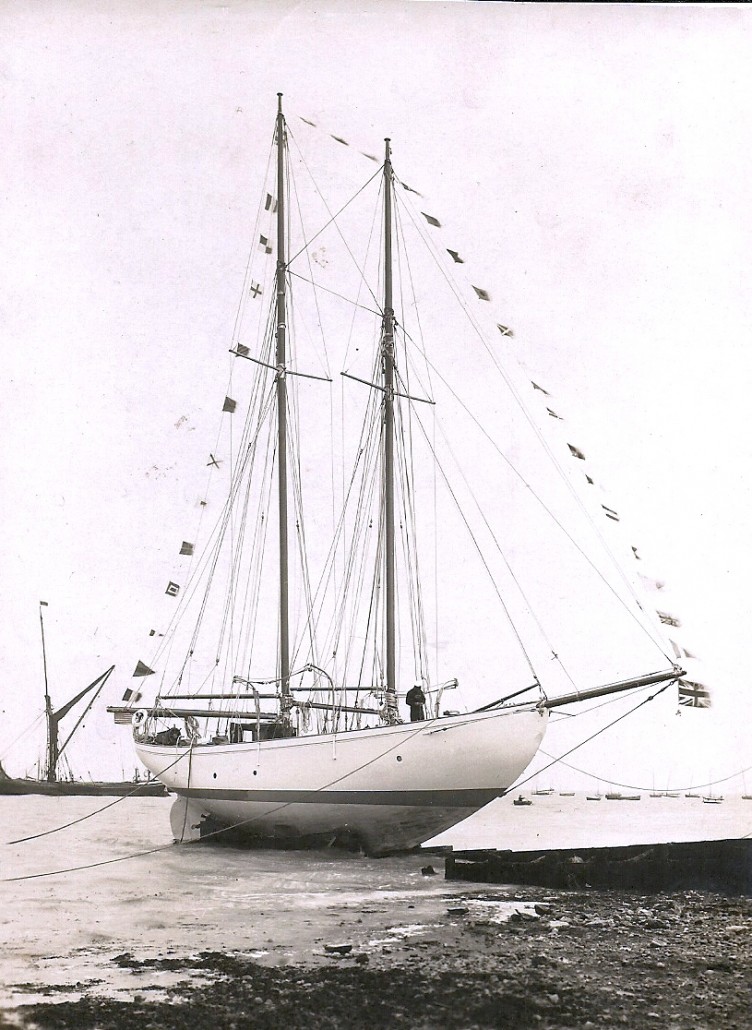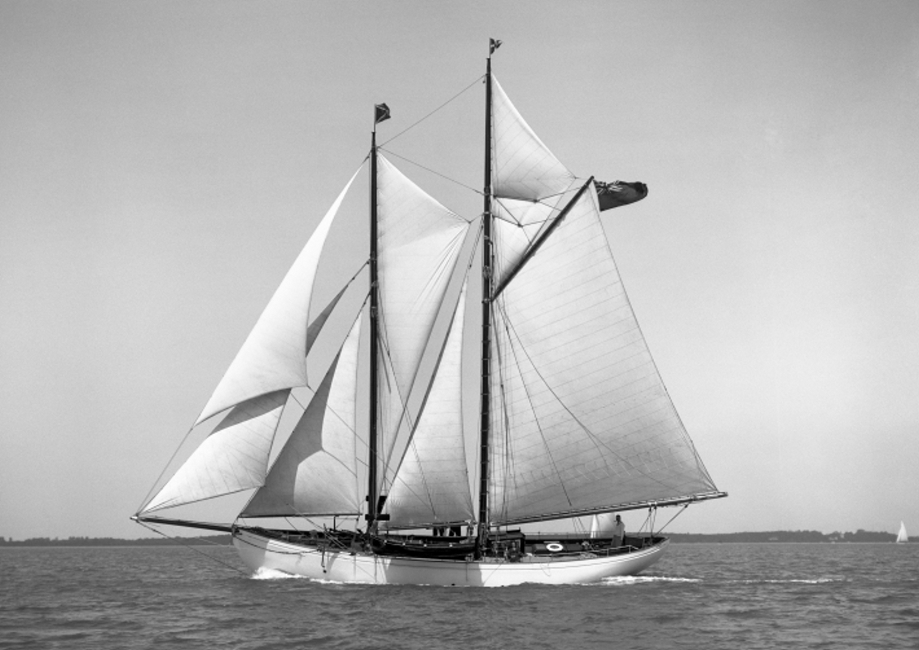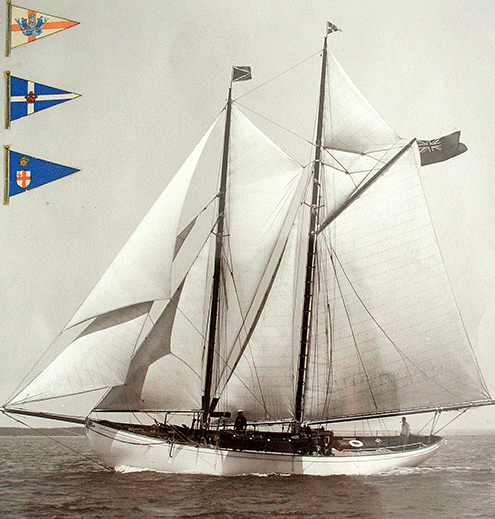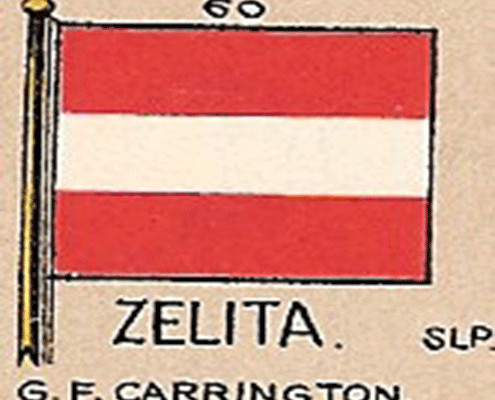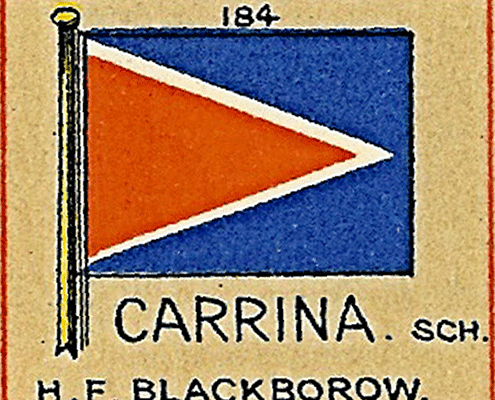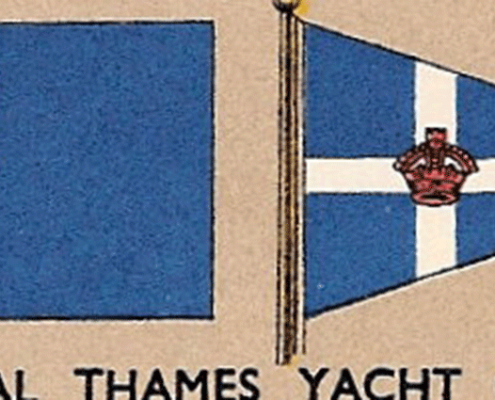From a good family.
Launched 1929
The yacht CARRINA, designed by Frederick Shepherd m.i.n.a., was built in 1914 under Lloyds survey 100 A1 – 18+A, by R.J. Perkins & Sons at Whitstable. She was commissioned for a Captain Westray as an auxiliary centre shaft gaff ketch in 1914. The hull was completed with deck housings but no deck when the Great War broke out and the captain was killed in action.
Up to 1929 when she was launched, Carrina have been stored in a shed at the yard, till Mr. G.F. Carrington bought her and changed her rig to a gaff schooner.
She’s an example of the finest English craftsmanship in yacht design and building. All the beams and the frames are of grown English oak. Planking is of the finest Burman teak 1 5/8 inch thick. Fred. Sheperd set high standards in order to ensure Carrina’s quality and seaworthiness, for instance:
“best Burman teak planking (not Java)”, “grown frame double timbers of English oak”, “lead keel bolts 1 3/8 & 1 ¼ – diars. best yellow metal”
First yacht with wishbone
During the Thirties, she was de-rigged every winter, her masts taken down and the ship stored in a barn at Camper & Nicholsons in Southampton.
The CARRINA, originally a gaff rigged top sail schooner, was the first (European)yacht with a running wishbone sail. In the years between 1934 and the outbreak of the War, she sailed mostly with the owner at the helm and a small (2) professional crew, in the Channel as far as Casablanca and the Canaries and also in the Baltic. The CARRINA was in Kiel harbour short before the start of WW II. She survived the Wwar II, de-rigged in a mud berth at Camper & Nicholsons with the spars stored ashore in a shed. All these Mac Gruer spars were destroyed during the ‘Southampton Blitz’ by a German bomb, except for the now, main staysail boom and the gaf which is nowadays used as the squareyard.
Post War
After the war, when CARRINA came out of hiding, she sailed in the Channel from Poole in Dorset and the family did a lot of mackerel fishing. During a gale-force onshore wind, while the CARRINA was in Portland harbour, her anchors dragged and she was almost dashed against some enormous cement constructions built in the middle of the harbour during the war for defence purposes. A navy launch saved her and the mariners helpt recovering the damage.
From 1947 till, the Staniland family bought her in 1953, CARRINA cruised quite extensively around England and to France and Spain.
Some major changes haven been made by the Stanilands: in 1956 the cockpit shelter aft was added at C & N. In 1966 a major maintenance have been done in Malta. The yacht was completely rewired as well as a new electrical panel, new main engine beds and a new marine diesel was installed, a Gardner 4LW.
One of the first charter yachts
The Staniland’s cruised and lived aboard the CARRINA for 29 years. The Staniland family averaged about 5,000 miles a year, and within their ownership, CARRINA made 6 Atlantic crossings. Their son Ian, born on the CARRINA, made his own crossing on the CARRINA in 1969 and owned so his own right for membership of the Ocean Cruising Club, from which his parents were founder members.
It’s interesting to note that the CARRINA was one of the first charter boats to work professionally in the Caribbean. Furthermore, the Staniland family visited the majority of Mediterranean countries. In 1973/74 father and son Staniland renewed the decks with 2 layers of 3/8ths marine ply screwed to the beams and 1″ teak – they hand screwed 6,000 silicon bronze screws into this deck!!
Since 1983, she has cruised the eastern Mediterranean several times, between Cyprus and Malta (including the coasts), and the islands of Turkey and Greece.
Having set sail from the Mediterranean, she sailed to Brazil where the CARRINA spent 3 ½ years sailing up and down the coasts and rivers. A further 1 ½ years were spent cruising the Caribbean islands before finally returning to Europe in the middle of the nineties.
Nowadays
CARRINA was sailed to Seville in 1992 where she was based for a few years, sailing the Atlantic coasts of Spain and Portugal, during which time a refit have been carried out. In the beginning of the years of the 21st century the CARRINA was sailed to the Balearics Spain, and since that time she has been based in Mallorca where a first part of a major refit was done in 2003 / 04. Since 2007 the CARRINA is based in the Netherlands and in 2010 the second part of the refit was finished at Ventis Shipyards in Enkhuizen the Netherlands. Over the last few years the CARRINA entered some Classic regatta’s in the Med. and the Netherlands where she became rather successful especially in heavy weather.



